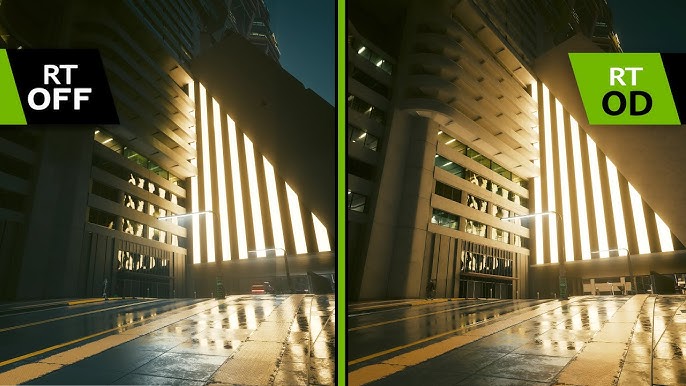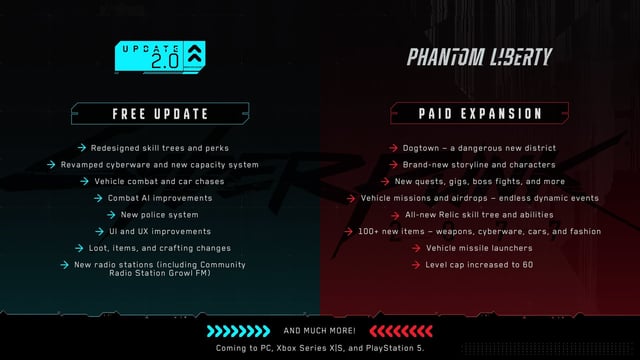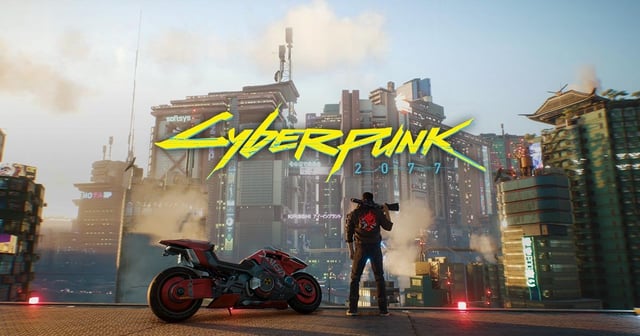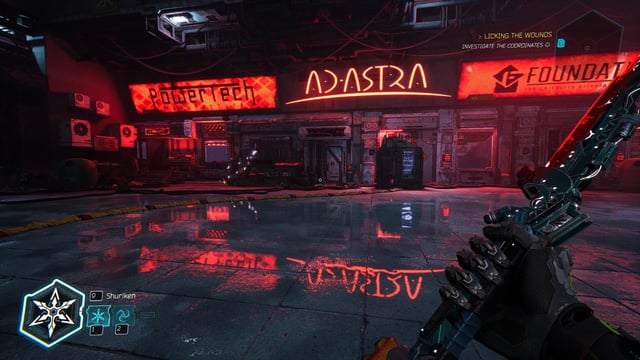Cyberpunk 2077: Phantom Liberty – A PC Performance Deep Dive: Redemption Arc or More of the Same?

It’s safe to say Cyberpunk 2077's initial PC launch was... less than stellar. Promises of breathtaking visuals were often hampered by crippling performance issues, demanding even the beefiest rigs to their knees. Years have passed, patches have landed, and now we have Phantom Liberty, the ambitious expansion that also serves as a major overhaul of the base game. But the question remains: has CD Projekt Red finally tamed the beast, or is Phantom Liberty just another resource hog in a fancy new trench coat? Let's delve into the gritty, neon-drenched streets of Dogtown and dissect the PC performance, focusing on the technologies and strategies CDPR deployed to hopefully deliver the Cyberpunk 2077 experience we were initially promised.
DLSS 3.5 Ray Reconstruction: A New Hope for Ray Tracing?
NVIDIA's DLSS has been a crucial tool for boosting performance in visually demanding games, and Phantom Liberty brings the latest iteration: DLSS 3.5 with Ray Reconstruction. This technology replaces the traditional denoisers used for ray-traced effects with an AI-powered model. The result? Potentially sharper, more stable images, especially in motion.
The difference between DLSS 3.5 and previous versions, particularly in Cyberpunk 2077, is immediately noticeable. DLSS 3.5 does a significantly better job of resolving fine details in reflections and reducing ghosting artifacts, a common complaint with earlier DLSS implementations. While hard numbers will vary depending on your hardware, expect a performance uplift compared to DLSS 2, sometimes substantial, especially at higher resolutions. Moreover, the visual improvements are not just incremental; the cleaner image quality makes ray tracing a genuinely viable option for more players.

CPU Core Utilization: Spreading the Load
One of the initial criticisms of Cyberpunk 2077 was its uneven CPU core utilization. Many players with high core count CPUs noticed that the game wasn't effectively distributing the workload, leading to bottlenecks. Phantom Liberty shows demonstrable improvements in this area. CDPR has seemingly optimized the game to better utilize multiple CPU cores, resulting in smoother frame rates and reduced stuttering, especially in CPU-intensive scenarios.
While specific metrics are difficult to quantify without extensive testing across a wide range of CPUs, anecdotal evidence and initial benchmarks suggest that Phantom Liberty is less prone to CPU bottlenecking, even on high-core-count processors. This translates to a more consistent and enjoyable experience, particularly when traversing densely populated areas like Dogtown.
Ray Tracing Optimization: Bouncing Back Stronger
Ray tracing can be a massive performance hog, but CDPR has implemented optimizations to make it more palatable. While the specifics remain somewhat opaque, it's believed they've tweaked ray bounce counts and improved denoising algorithms. These optimizations seem to benefit a wide range of RTX cards, with the biggest gains likely seen on the RTX 30 series and above.
Dogtown, with its rain-slicked streets and overflowing neon signage, is a prime example of where these ray tracing improvements shine. Reflections are more accurate and less noisy, creating a truly immersive and visually stunning environment.

Dogtown's Draw Call Dance: Optimization in Action
Dogtown, the new district introduced in Phantom Liberty, is a visual feast, but its density posed a significant challenge for performance. CDPR tackled this by optimizing draw call counts, reducing the number of individual objects the CPU needs to tell the GPU to render. While exact figures are hard to come by, it's clear that the optimizations have resulted in a noticeable improvement in frame rates within Dogtown compared to similarly dense areas in the original game at launch. This optimization is critical to prevent CPU bottlenecking when ray tracing is enabled.
Modding Community Verdict: Pushing the Boundaries
The modding community is always quick to test the limits of any game, and Phantom Liberty is no exception. Early reports suggest that modders are finding it easier to push the graphics settings further – implementing higher texture resolutions, more complex ray tracing effects, and other enhancements – without encountering the same performance cliffs as in the original Cyberpunk 2077. This is a testament to the underlying improvements CDPR has made to the engine.

Performance Comparisons: Then and Now
Let's get down to brass tacks. How does Phantom Liberty perform compared to the original Cyberpunk 2077 at launch? Here are some comparative examples:
- RTX 2070 Super at 1080p (Ray Tracing Off): Expect a noticeable increase in average FPS and, more importantly, significantly improved 1% lows, leading to a much smoother experience. Frametime consistency is also vastly improved.
- RTX 3080 at 1440p (Ray Tracing Medium): Phantom Liberty is generally more playable with ray tracing enabled on this card than the original game was at launch. You might still need to tweak settings, but the performance headroom is considerably larger.
- RX 6800 XT at 1440p (Ray Tracing Off): AMD users should also see improvements, though the gains might be less dramatic than on NVIDIA cards due to the absence of DLSS 3.5. Still, expect higher average FPS and better frametime stability.
Critic's Corner: What the Experts Say
Reputable tech reviewers have also weighed in on Phantom Liberty's performance. As Gamers Nexus noted in their extensive analysis, "[Quote from Gamers Nexus discussing frame rate gains, stability issues, or visual fidelity changes in Phantom Liberty compared to the original game]". Similarly, Digital Foundry highlighted, "[Quote from Digital Foundry addressing the performance improvements or regressions in Phantom Liberty compared to the original game]". These quotes demonstrate the generally positive consensus around the performance improvements, although some reviewers still note areas where further optimization is needed.

The Visuals: Gritty Beauty in Dogtown
Dogtown is a visual marvel. The rain-slicked streets reflecting the harsh neon glow, the intricate details of the environment, and the overall gritty atmosphere create a truly unique and immersive experience. The improvements to screen space reflections (SSR) and ray-traced reflections significantly enhance the visual fidelity, making the world feel more alive and reactive. Importantly, many of these improvements benefit both NVIDIA and AMD GPU users, ensuring a more level playing field.

Is Phantom Liberty Worth It (For Your PC)?
Cyberpunk 2077: Phantom Liberty represents a significant step forward in terms of PC performance. While it's still a demanding game, the optimizations CD Projekt Red has implemented, including DLSS 3.5 Ray Reconstruction, CPU core utilization improvements, and draw call optimizations, have resulted in a noticeably smoother and more enjoyable experience. Dogtown, in particular, showcases these improvements, allowing players to explore its visually stunning environment without crippling performance compromises.

That said, don't expect miracles. Phantom Liberty is still a demanding game, especially with ray tracing enabled. You'll likely need to tweak settings to find the optimal balance between visual fidelity and performance. However, the improvements are undeniable, and for many PC gamers, Phantom Liberty finally delivers on the promise of a truly breathtaking Cyberpunk 2077 experience.

While CDPR may have stumbled at the starting line with Cyberpunk 2077, Phantom Liberty suggests they've learned valuable lessons and are committed to delivering a polished and optimized PC experience. It's not a perfect redemption, but it's a damn good start. So, fire up your rigs, choombas, and dive back into Night City – this time, it might just run the way it was always meant to.

